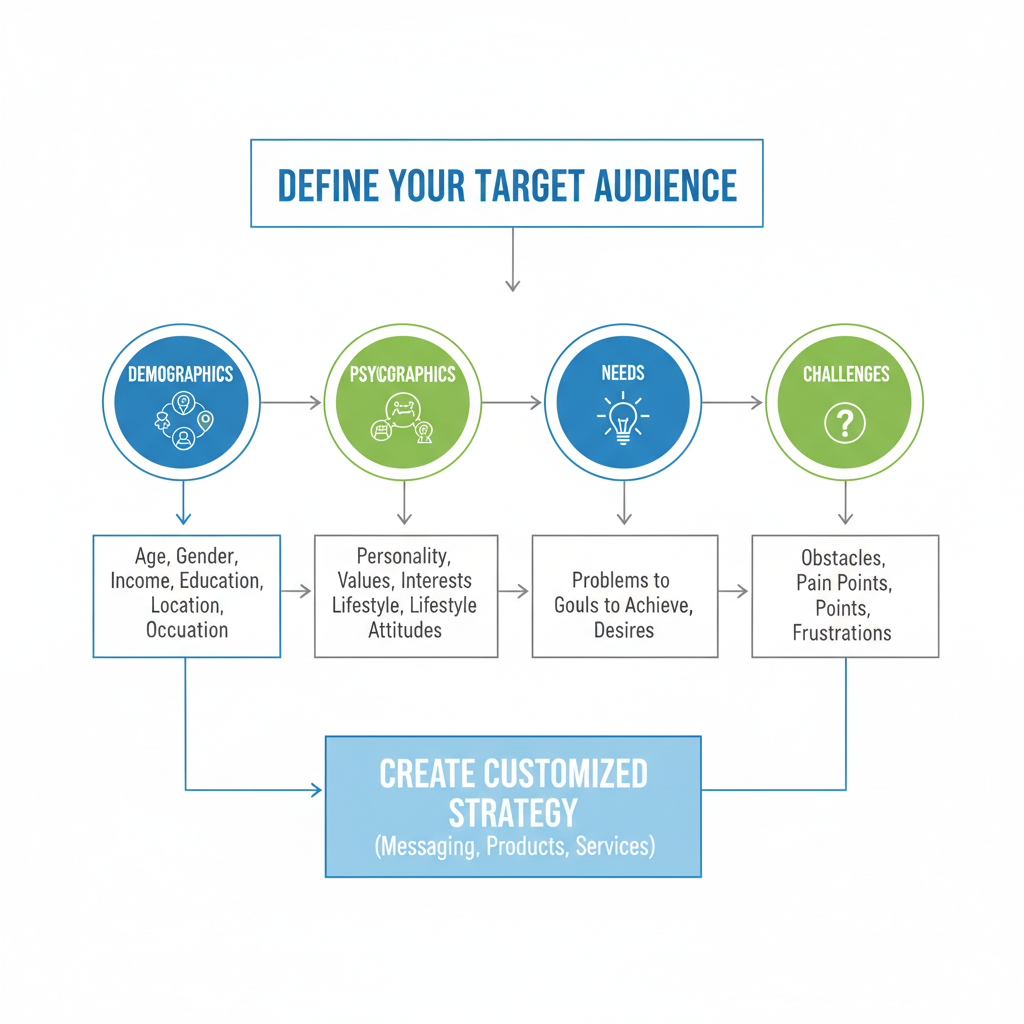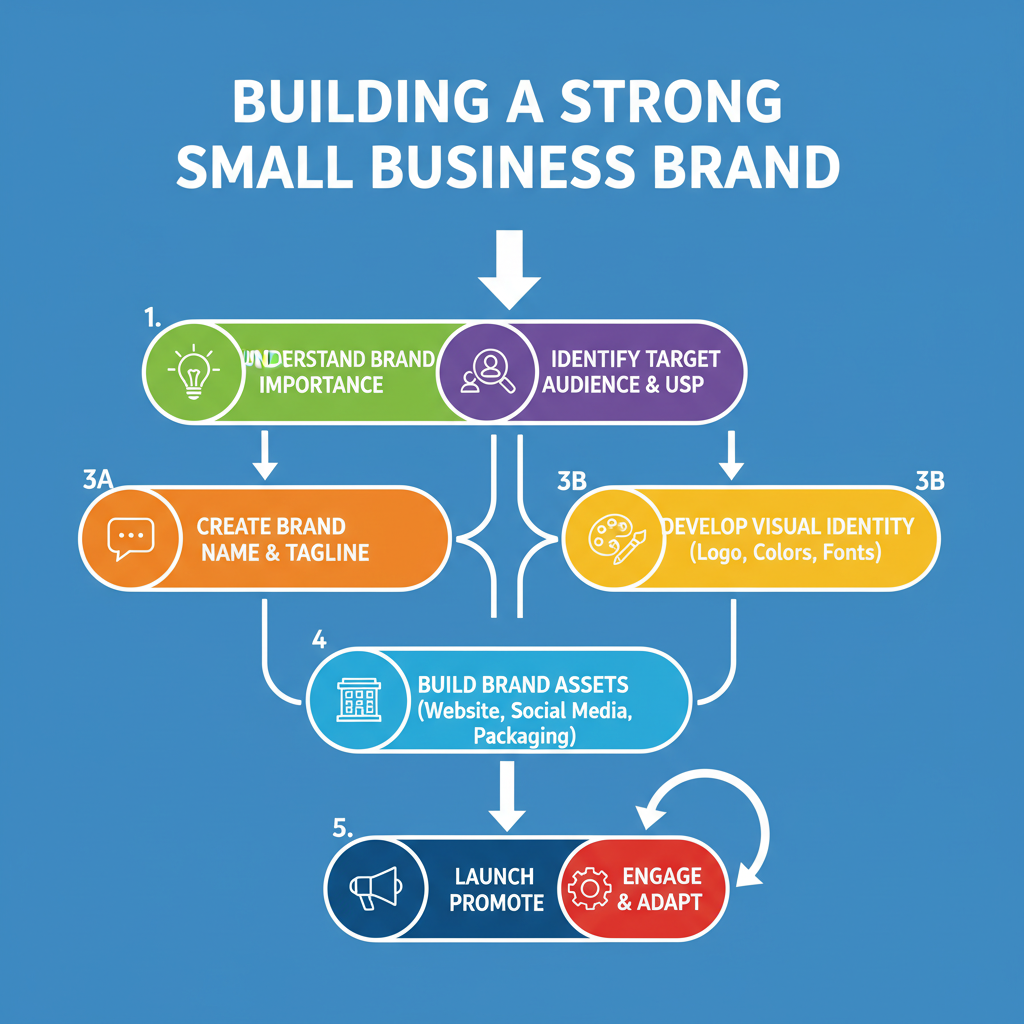Strategies to Build Strong Small Business Brands
Learn effective strategies for small business branding, from defining your audience and USP to crafting visual identity and consistent brand voice.

Building a Strong Small Business Brand: Strategies That Work
For entrepreneurs and local businesses, a small business brand is the heartbeat of growth and loyalty. More than a logo or tagline, your brand defines your personality, values, and how customers perceive your products or services. In competitive markets, a well-crafted brand can set you apart, inspire trust, and make your marketing more effective.
This guide covers proven strategies on how to create, maintain, and evolve small business branding for lasting impact.
---
Understanding Small Business Brands and Why They Matter
A small business brand is far more than a logo or a catchy slogan—it’s the full personality, promise, and perception your customers have about your business. It encompasses the values you stand for, the emotions you evoke, and the consistent experience you deliver to your audience.
For small businesses, branding is a powerful differentiator. A strong brand can:
- Build trust with customers faster.
- Command loyalty in competitive markets.
- Enable premium pricing.
- Simplify marketing decisions by providing clarity.
Ultimately, branding influences how people remember and recommend your business. Without it, your product or service risks becoming interchangeable with competitors.

---
Identify Your Target Audience and Unique Selling Proposition (USP)
Before designing logos or writing taglines, you need to define exactly who you want to serve and why they should choose you over others.
Steps to define your target audience:
- Research demographics: age, gender, location, income.
- Understand psychographics: interests, values, lifestyle.
- Map customer pain points and desires.
- Build buyer personas for clarity.
Your USP is the specific promise that makes your offering stand out. It should answer:
- What makes your business unique?
- Why should customers pick you over similar offerings?
A well-defined USP becomes the cornerstone of all branding decisions.
---
Craft a Memorable Brand Name and Tagline
A name and tagline are your brand’s first handshake with the world. They must be easy to remember, relevant, and evocative.
Tips for creating your brand name:
- Keep it short and pronounceable.
- Avoid complex spelling.
- Reflect your core values or industry.
- Check domain and trademark availability.
Writing your tagline:
- Make it benefit-driven (what problem you solve).
- Use active language.
- Ensure it works across platforms.
Example:
> Name: BrightBean Coffee
> Tagline: Fuel Your Day, Brightly.
---
Design a Cohesive Visual Identity
Your visual identity is the aesthetic foundation of your brand. This includes the logo, color palette, and typography.

Logo
Create a logo that is versatile, legible at small sizes, and works well in black and white.
Colors
Choose a palette that aligns with your emotional goals:
- Blue: trust, stability.
- Green: growth, eco-friendliness.
- Red: passion, urgency.
Typography
Pick fonts that reflect your personality—serif fonts for tradition, sans-serif for modernity.
| Element | Purpose | Example |
|---|---|---|
| Logo | Immediate visual recognition | Apple's logo |
| Color Palette | Sets emotional tone | Blue + white for trust |
| Typography | Reinforces personality | Sans-serif for clean modern look |
---
Build a Consistent Brand Voice Across Platforms
Brand voice refers to the style and tone of your communication. Whether you write blog posts, tweets, or emails, your voice should remain consistent.
Examples of brand voices:
- Friendly and conversational.
- Professional and authoritative.
- Quirky and playful.
To maintain consistency:
- Create a brand style guide.
- Define preferred vocabulary and tone markers.
- Train team members to follow guidelines.
---
Create a Compelling Brand Story
Humans respond to stories more than statistics. Your brand story should:
- Explain why you started.
- Connect your mission to customer needs.
- Showcase real-life impact.
A strong brand story makes people feel emotionally aligned with your business.
Example structure:
- Problem you’ve identified.
- Your journey to address it.
- The success customers experience with your product.
---
Leverage Social Media to Showcase Brand Personality
Social media is a cost-friendly channel for expressing your brand personality. Use it to:
- Share behind-the-scenes content.
- Highlight company culture.
- Engage directly with customers.

Platform tips:
- Instagram: Strong visuals and lifestyle content.
- LinkedIn: Professional articles, thought leadership.
- TikTok: Fun, short videos that entertain.
Consistency in visuals, captions, and community engagement strengthens brand recognition.
---
Use Content Marketing to Reinforce Brand Authority
Content marketing builds trust and positions your brand as an industry expert.
Ideas for small business brands:
- Blog posts explaining your industry.
- How-to guides and tutorials.
- Case studies showcasing results.
- Educational webinars.
Example:
Post Title: "5 Tips for Organic Gardening"
Brand Tone: Friendly, knowledgeable, supportive.
CTA: "Discover more in our free eBook—download today!"Content reinforces the brand voice while addressing customer needs.
---
Encourage Customer Reviews and Testimonials
Social proof is crucial for credibility. Positive reviews build trust among prospects.
Ways to collect testimonials:
- Ask happy customers directly after a transaction.
- Offer incentives for feedback.
- Showcase reviews on your website and marketing materials.
Make reviews easy to leave—provide links or instructions.
---
Measure Brand Impact: Awareness and Engagement Metrics
To understand how well your branding works, track key metrics:
| Metric | Purpose | Tools |
|---|---|---|
| Brand Awareness | Measures recognition among target audience | Google Trends, surveys |
| Engagement Rate | Evaluates interaction with content | Social media insights |
| Customer Retention | Shows loyalty over time | CRM systems |
By analyzing this data regularly, you can identify strengths and weaknesses in your branding strategy.
---
Adapt and Evolve Branding Strategies
Brands aren’t static—they evolve as businesses grow and markets change.
Guidelines for evolution:
- Refresh visuals to stay modern.
- Adjust tone if audience demographics shift.
- Revisit your USP to ensure relevancy.
Monitor trends and customer feedback to make informed changes without losing core identity.
---
Final Thoughts
Building a strong small business brand is an ongoing process requiring clarity, creativity, and consistency. From defining your target audience to telling a compelling story, each step strengthens your connection with customers.
Stay committed to delivering on your brand promise, and your small business won’t just be recognized—it will be remembered.
Take the next step: Start refining your brand strategy today and position your small business for lasting success.




